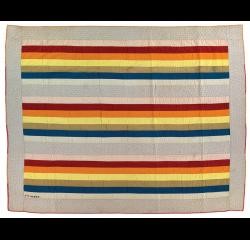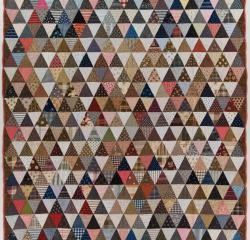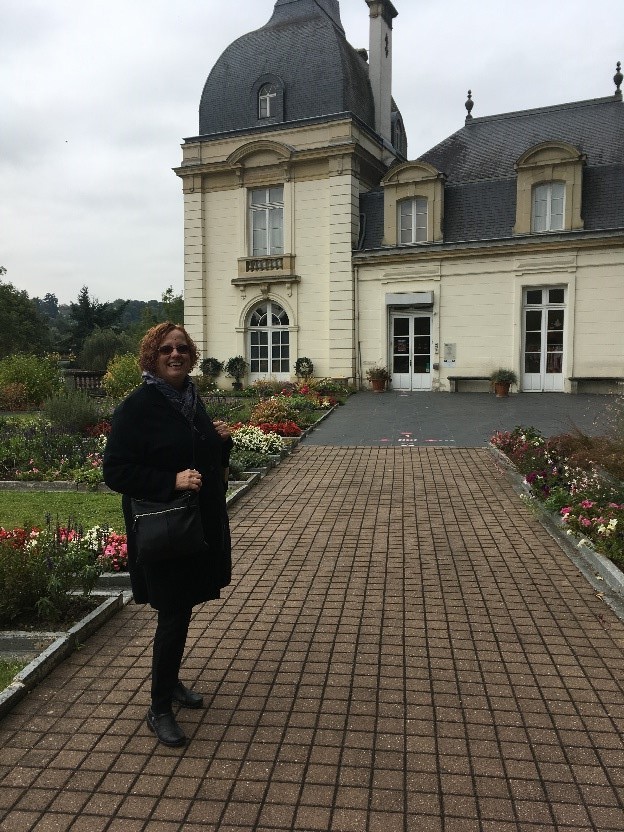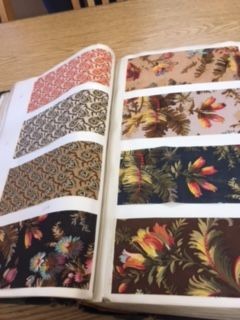What’s it Like to Have a Career in Textiles? Ask Gail van der Hoof
I often think that, had I enjoyed a wider world view when I was young, I would have come to quilts much earlier than I did. As a 1950s child of the steel mill area of Chicago’s South Side, I knew no one who had quilts—it was chenille spreads for us . And I certainly had no idea that it was possible to study textiles or to get academic training as a museum curator. I wouldn’t say my youth was wasted (my English major gave me the life-long pleasures of reading and writing) but I look with a little envy at people like Honoree Gail van der Hoof whose lives took a very different direction.
Gail is known in the quilt world as the partner of another Honoree, Jonathan Holstein; in 1971 they co-curated a ground-breaking exhibit of quilts at the Whitney Museum of American Art. They are credited with changing the perspective of quilts as home goods/decorative arts into “real” art to be hung on walls. The 50th anniversary of that exhibit is coming up and I’ll write more about it later, but here are some images of quilts in the exhibit; they were collected by van der Hoof and Holstein and are all now at the International Quilt Museum in Lincoln, NE.
Center: Kaleidoscope
Right: Thousand Pyramids
For today though, I’d like to explore a more intimate aspect of this Honoree. First, take a few minutes to read the biography on the Hall of Fame website, and we can compare notes. https://quiltershalloffame.net/gail-van-der-hoof/
OK. Here’s one thing that struck a chord with me: Gail never became a quilter, but she had an over-arching interest in textiles. Imagine taking the Orient Express to Turkey to explore textiles! Can’t you see her in a market looking at rugs? I wonder if she haggled for her purchases? Probably so, if her introspective assessment gives us a clue. “I must have been a rag picker in my last life. I have always haunted thrift shops or used clothes markets and can always find something good.” How many of you can relate to that?
And that question opens the way for more questions. Do you love finding bargains? And what do you do with them? Are you like Gail and wear what you find, or are you shopping for fabric there? I know there are women who find old aprons and dresses to use for repair of vintage quilts, and I have read articles that suggest treasure hunting at the thrift shops for flannel shirts and hankies (for “masculine” and “feminine quilts”).
If you are a quilter, do you ever mix textiles, or do you stick with cotton? I tried using silk once and found it to ravel more than I expected—I probably should have used a stabilizer—but it catches the light in a way that makes the quilt more interesting. I’m going to have to “up” my technique if I ever get around to making a piece from my husband’s old neckties, and I have an idea for using some of my no-longer-worn scarves. But that’s about as far as I dare to go. The biography also mentions Gail’s other travels, to Holland, England, other parts of Europe, and to West Africa. All of those places have a significant and distinct textile history, and I wonder how much of that Gail explored on her trips? I’ve been to the Toile Museum in Jouy, France, and to the mills in Lowell, Massachusetts. I enjoyed seeing the swatch books of 19th century fabrics at the museum in Manchester, New Hampshire.
(There aren’t enough photos of Gail, so I’ve added my vacation pics.)
But all of that was just “spectator sport”. What would it have been like if I had studied textiles in college as Gail did? I don’t think I would have enjoyed it any more, but I certainly would have been better able to put it all in context.
So, I think that’s what makes Gail van der Hoof a Hall of Fame Honoree: the ability to have brought her academic training and work experience to see quilts from a different perspective. First, as something worth collecting, and then as something worth appreciating for art’s sake. She deserves her place and I’ll try not to be too envious of her career path.
Your quilting friend,
Anna




